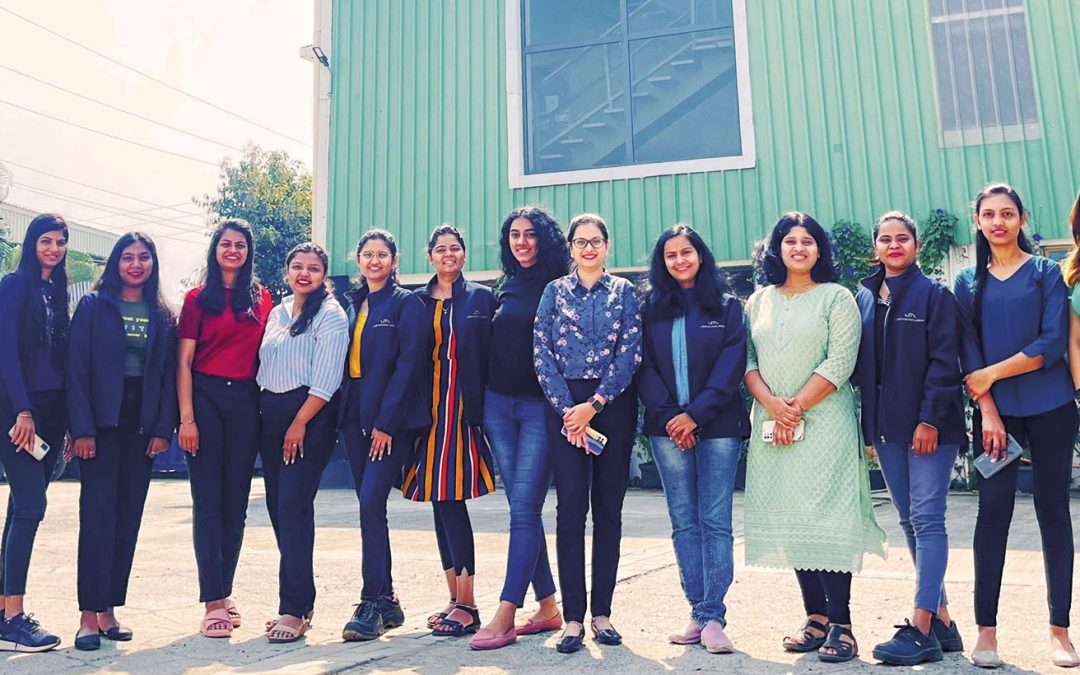Globally, the manufacturing sector is still male-dominated, and many companies struggle to attract skilled female candidates. But with digital technologies creating previously undreamed-of job possibilities, Jendamark is working hard to redress the gender imbalance.
The management teams in both India and South Africa have set clear targets to develop a diverse and inclusive workforce across all departments.
“In a perfect world, we would want a 50:50 ratio,” says Jendamark Automation human resources manager Mariette Geldenhuys.
“But we are hopeful that with the intake of more women through our skills development programmes, such as apprenticeships, we are actively working towards closing the gender gap, especially in the traditionally ‘male’ technical roles.”
The big picture
At Jendamark India, where women currently represent 7% of the workforce, the company has set an ambitious target of doubling this in the 2023 financial year. The aim is to employ at least one or two women in every department. “The advantages of having women in the workforce are manifold,” says JMKI’s head of HR, Pallavi Chavan.
“On a micro level, working women become financially independent and will have greater control over their own lives. This encourages women to stand against physical and emotional abuse, enabling them to handle social issues and pressures. At the macro level, greater participation of women in the workforce is good for the overall economy.”
In South Africa, women are one of the under-represented minority groups covered by the Employment Equity Act.
“In terms of affirmative action, we absolutely want to contribute to the success of various policies in this regard, but our aim is always to be an equal opportunity employer and appointments will be made according to experience and merit,” explains Geldenhuys, adding that female representation has grown from 16.9% to 24% in just two years.
Digital transformation
Both Chavan and Geldenhuys agree that the rise of Industry 4.0 technologies is transforming and creating new opportunities in the manufacturing space.
“In terms of innovation, women are adding great value, but a lot can be done to encourage young girls to enter into the fields of ICT, science and technology, which will enable them to apply for the various types of jobs that will inevitably be created by 4IR trends,” says Geldenhuys.
“It will become society’s duty to empower girls to be able to pursue these careers, specifically those in rural areas where access to technology is near non-existent.”
Employer of choice
According to the human resources professionals, diversity is becoming a strategic imperative for organisations looking to build a sustainable future. Women tend to bring a different dynamic to the workplace, with collaborative management styles and multi-tasking abilities, which fosters more balanced, motivated, and creative teams, helping the business to grow to its full potential.
“But this requires change from the top and, in Jendamark’s case, this change is being driven from exactly there. Being able to offer flexibility and a positive work-life balance by incorporating various policies and incentives will make a difference in attracting and retaining these skills,” Geldenhuys says.
Both agree that Jendamark’s flexible work-from-home policy, maternity leave benefits and empowerment programmes, such as self-defence training, are making a difference.
“Ultimately, our aim, when it comes to both male and female employees, is to be the employer of choice,” affirms Chavan.
